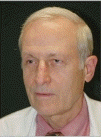Innovations: a dawning of a new age
Article information

Innovation forms the backbone of our specialty—Rohrich et al. [1]
Ideas→ Insight→ Ingenuity→ Improvisation→ Invention→ Innovation. Perhaps the preceding is not in the correct order nor one leads to the other, but surely we cannot argue that without innovation there will be no future for the specialty of plastic and reconstructive surgery [1]. We own no anatomical territory [2], but we are the “problem solvers” for all other surgical specialties [3]. From the Oxford English Dictionary, innovation may be defined as the “alteration of what is established by the introduction of new elements or forms [4,5].” A too often rigid adherence to what is established, that is, omnipresent dogma, restrictive rules, and deafening protocols, will only stifle creativity [6]. An unsolvable problem or for that matter one that is just routine, may have an unforeseen better solution—that an innovation that must be original, quite relevant, pragmatic, and preferably simple in application [3,4]. Necessity may be the mother of invention, but innovation is its identical twin.
The typical innovator has a unique personality. Diverse traits may encompass common sense, a flair for creativity, flexibility, logical intuition, pragmatism, independent source of motivation, a spirit of enthusiasm, obsession for perfectionism, and undaunted perseverance [6]—already characteristics of most plastic surgeons!
Remember though that Edison stressed that the genius of innovation was “1% inspiration and 99% perspiration [7].” Thanks to technological advances in communication, today innovation has become a global capability [8]. No longer is there a hindrance for the solitary individual in a community hospital or remote geographical location. After all, did not long ago Buncke develop microsurgery in his garage [9], and it is said that Robert Acland in the beginning was a “one man band [10],” although the two often exchanged ideas and perhaps innovations using correspondence today we call snail mail!
But innovation will be valueless unless there is dissemination in some form, usually via presentations or currently more often in our literature [11]. Rohrich et al. [1] have emphasized that innovations must be backed by high-level proof of efficacy to overcome the appropriate skepticism and conservative behavior of most physicians.
Buncke’s guiding philosophy was that “ideas are cheap, results are priceless [12],” and that “we learn by failures [10],” often our own. Thus, it is logical that most major plastic surgery journals today seek “results;” and have a preference for publishing large clinical trials, meta-analysis, and outcome studies. Submissions for “ideas and innovations” are typically restricted to a minimum number of words, figures, and supporting references—barely enough to scribble down the details. Yet without innovation, whether appropriate or not often to be first found in the daring and novelty of case reports (e.g., Taylor and Daniel’s first composite tissue free flap [13]) or small patient series, the fear without them should be that there will be no future new outcomes to study. This should not be forgotten by this new editorial board of the Archives of Plastic Surgery. Their goal should not be just to be the premier Asian plastic surgery journal. This journal should stand out as the “Journal of Plastic Surgery Innovations.”
The goal would then easily be changed, to be the premier global plastic surgery journal!
Notes
Conflict of interest
Geoffrey G. Hallock is an editorial board member of the journal but did not involve in the peer reviewer selection, evaluation, or decision process of this article. No other potential conflicts of interest relevant to this article were reported.
